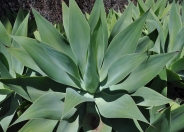
Common name: Fox Tail Agave
Botanical name: Agave attenuata
This Agave has a dramatic tropical form. Even light frost can damage its succulent leaves. It is great for containers. In the low desert, partial sun will be best. If it becomes top heavy, simply cut and stick in the ground to root. It is not a fast grower and has light green foliage. It will also die after flowering but pups around the mother will survive. Distinctive with its large rosette of leaves perched on a long curving trunk, it is a native from Mexico. Also called: Velvet Agave
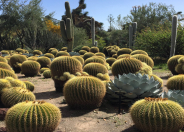
Common name: Golden Barrel Cactus
Botanical name: Echinocactus grusonii
Golden Barrel Cactus has a globe shaped trunk and vertical ribs lined with thick rows of golden spines. It grows slowly to 3' tall. It looks handsome in containers. It can thrive in full sun but prefers some shade in low desert. This cactus prefers well drained soil and rots with poor drainage.
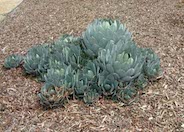
Common name: Parry's Agave, Orange Century Plan
Botanical name: Agave parryi v. huachucensis
This slow growing succulent reaches 2' tall and wide. It is clump forming with a dense rosette made of short gray leaves with dark thorns on the margins. This is the largest of the subspecies of parryi with leaves 2' long. It is subject to Agave weevils. It blooms once in its lifetime, sending up a tall flowering yellow spike. This signals the death of the plant but typically, there are pups surrounding the plant. It may take 30 years for this plant to bloom.
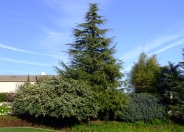
Common name: Deodar Cedar
Botanical name: Cedrus deodara
This fast-growing, coniferous evergreen is capable of reaching a size of 80' high by 40' wide. Its needles are a light, silvery green color, 2" long. Flowers are inconspicuous. Barrel shaped cones appear in fall and winter. Branches are pendulous and spreading. Plant in area that has ample room for growth.
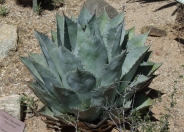
Common name: Parrasana Agave
Botanical name: Agave parrasana
This Agave is native to Coahuila, Mexico from 4500'-8000' elevation and is similar in appearance to Agave parryi. Solitary plant forms tight rosette 2' by 2' resembling a cabbage. It has stout gray leaves edged with small teeth and a sharp terminal spine. This plant needs full sun to part shade. It will offset to form a dense colony.
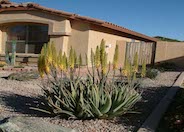
Common name: Aloe Vera or Medicinal Aloe
Botanical name: Aloe vera
The rosette of this plant consists of fleshy gray green leaves, which are narrow, succulent and erect with soft spines on margins. This Aloe is a slow to moderate grower. Flowers are spikes of yellow, 2'-3' tall and bloom late winter to summer. This aloe can form large clumps. It will tolerate full to partial sun, needs some supplemental water in heat and good drainage. It attracts hummingbirds. This aloe is a Mediterranean native. The sap is used for burns and abrasions.
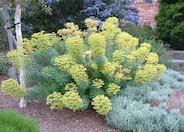
Common name: Bush or Dome Euphorbia
Botanical name: Euphorbia characias
This perennial will reach about 4' tall and wide with a rounded shape. It has blue green leaves with lime green flowers (actually bracts) that bloom from late winter to early spring. When bracts turn yellow, it's time to prune them. Make sure you wear gloves when pruning as plant exudes sap that could cause allergic reaction. This plant does well in full sun and is drought tolerant once it's established. It does spread through saplings but it can easily be controlled.
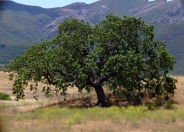
Common name: Coast Live Oak
Botanical name: Quercus agrifolia
The Coast Live Oak is an evergreen, round-headed tree with regal bearing. It can reach 25'-80' high and 25-40' wide and grows very well from the coastal areas to the interior valleys. Strong herculean branches adorn mature trees casting much appreciated summer shade. It attracts wildlife in droves.
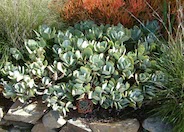
Common name: Silver Dollar Plant
Botanical name: Crassula arborescens
This succulent perennial will grow 4'-5' tall and wide. It has thick, silver gray leaves with a tint of pink around the edges. It will do best in partial shade to full sun with well draining soil. It is drought tolerant once it's established. Be careful not to overwater. It does not tolerate humidity and hot evenings. White flowers appear in spring but this is rare in cultivation. This plant can be used indoors but needs bright light. Looks great in containers.